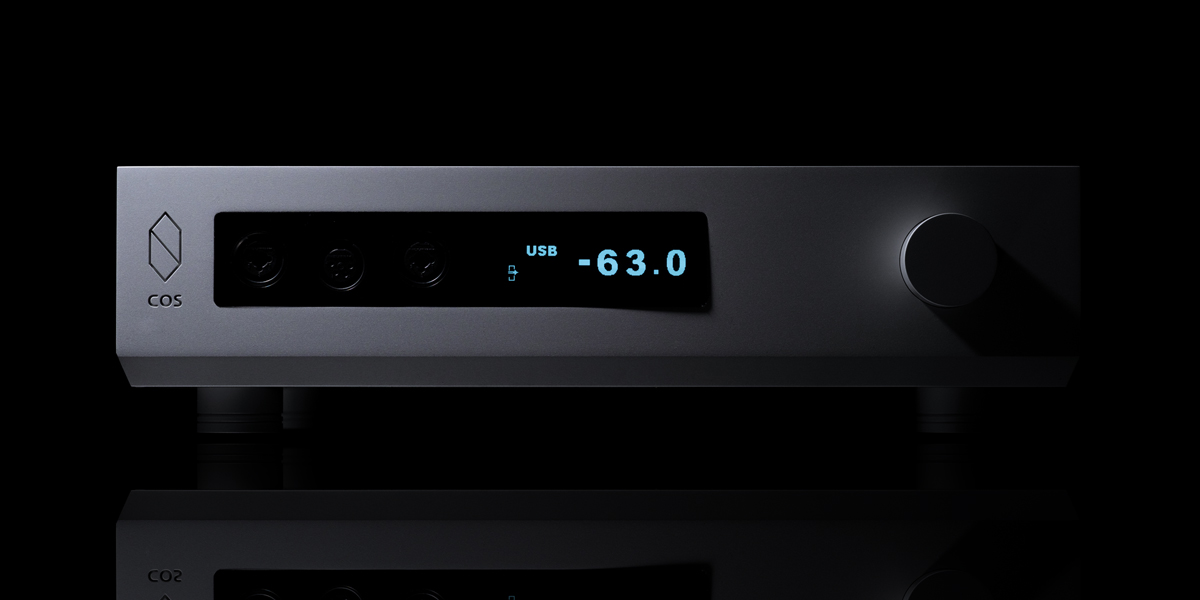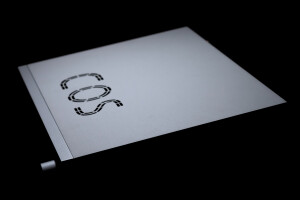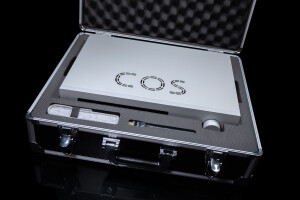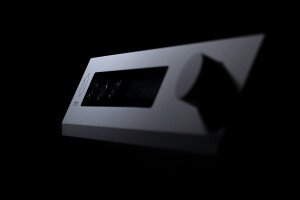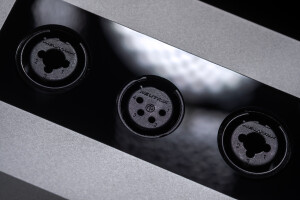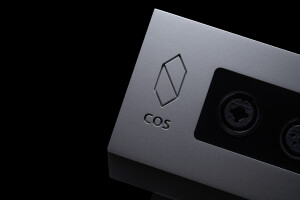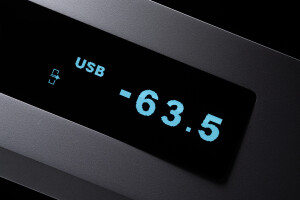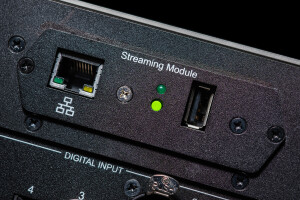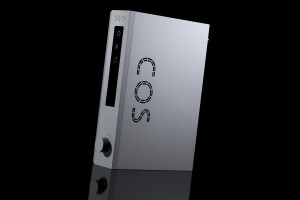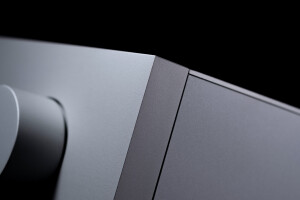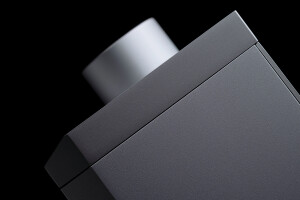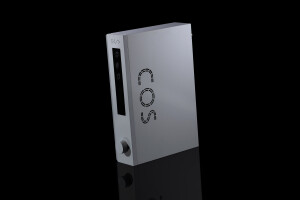The Taiwanese COS Engineering team debuted in 2014 so they’re no strangers to the industry. Their fourth and latest effort – COS Engineering D10 – is a modular heavy hitter designed to sell for significantly less than the D1 flagship but offer even more. Enjoy!
Introduction
Time surely goes by. Although it’s been almost five years since my first COS Engineering assignment published here, I remember its subject D1 DAC/pre combo rather well. This sleek looker not only sounded great and was made unlike anything else I’ve had the pleasure of reviewing any earlier, but it also liberated me from seeing the ΔΣ architecture as less kosher versus R-2R D/A engines. Past visiting my colleague Jacek, who back then had at his disposal Reimyo’s full stack married to Trenner&Friedl Isis floorstanders, I’d learnt that at the D1’s sonic level such rules didn’t apply, which was in fact the most prominent upshot of its story.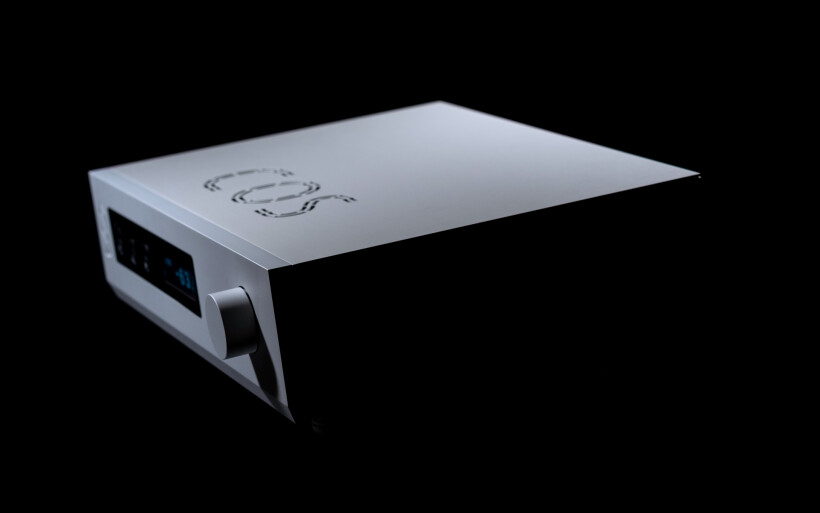 Although the highly educational time spent at Jacek’s place allowed me to fully grasp what the COS Engineering D1 did and how, it still was a very costly portfolio opener by a company with no track record in the audio industry. As much as I’d like to think otherwise, in this context its tasteful sonic profile, visual minimalism and overall seriousness weren’t essentials. The reality is that hefty asking price and unknown origin are anything but helpful in turning newcomer audio houses into well-established operations. The brand recognition they strive for demands dividends paid in resources, dedication and years of work. Constant visibility on the industry’s radar is a process that usually takes more than one product regardless of how fancy it might be. Still, my own scanner registered the D1’s presence clearly enough to look forward to its makers’ next developments very much intrigued. Past this assignment I was also quite certain that they must’ve had more aces up their sleeves.
Although the highly educational time spent at Jacek’s place allowed me to fully grasp what the COS Engineering D1 did and how, it still was a very costly portfolio opener by a company with no track record in the audio industry. As much as I’d like to think otherwise, in this context its tasteful sonic profile, visual minimalism and overall seriousness weren’t essentials. The reality is that hefty asking price and unknown origin are anything but helpful in turning newcomer audio houses into well-established operations. The brand recognition they strive for demands dividends paid in resources, dedication and years of work. Constant visibility on the industry’s radar is a process that usually takes more than one product regardless of how fancy it might be. Still, my own scanner registered the D1’s presence clearly enough to look forward to its makers’ next developments very much intrigued. Past this assignment I was also quite certain that they must’ve had more aces up their sleeves.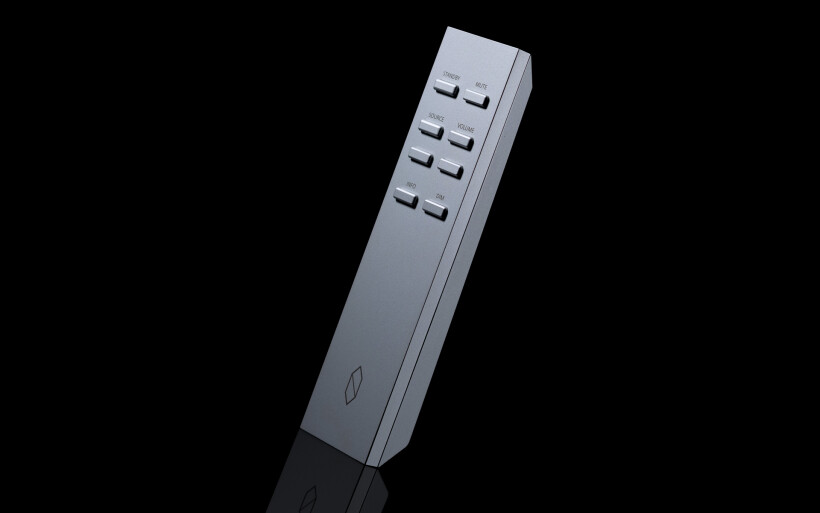 The second COS Engineering development was baptized H1 and introduced here. It emerged as a compact DAC/headfi deck priced at €2’500 before VAT and tax, so nowhere near as costly as the same operation’s firstborn reviewed just several month earlier. The former looked the part, performed great and was attractively priced all things considered. It also had me convinced about the team COS’ forward thinking due to the very smart detour towards headphones and their constantly growing popularity. The third Taiwanese specimen – COS Engineering D2 – was functionally alike the D1 top dog but downscaled to sell for noticeably less than half its ask. Although their brotherly fight was off the table – for this you’d have to look at Srajan’s writing published here – on fit’n’finish both felt equally luxurious.
The second COS Engineering development was baptized H1 and introduced here. It emerged as a compact DAC/headfi deck priced at €2’500 before VAT and tax, so nowhere near as costly as the same operation’s firstborn reviewed just several month earlier. The former looked the part, performed great and was attractively priced all things considered. It also had me convinced about the team COS’ forward thinking due to the very smart detour towards headphones and their constantly growing popularity. The third Taiwanese specimen – COS Engineering D2 – was functionally alike the D1 top dog but downscaled to sell for noticeably less than half its ask. Although their brotherly fight was off the table – for this you’d have to look at Srajan’s writing published here – on fit’n’finish both felt equally luxurious.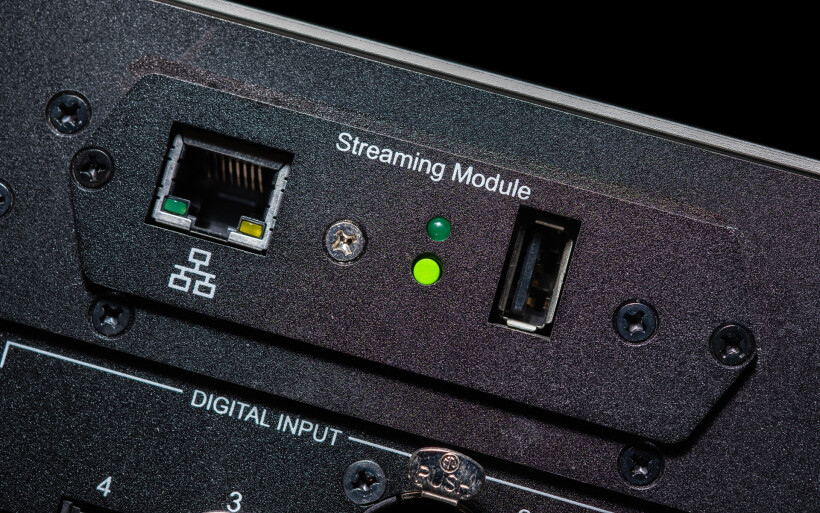 This report’s COS Engineering D10 wasn’t designed as a cost-effective take on its D1 sibling, but an ambitious project on performance in the same ballpark, dressed as sharply and modular on top of that. The result is a full-sized 3-in-1 DAC/pre/headfi deck with enough space to accommodate optional streaming and phono boards at extra cost. Since everything vinyl is beyond my scope, the 4-in-1 care package sent my way will have to do, enjoy.
This report’s COS Engineering D10 wasn’t designed as a cost-effective take on its D1 sibling, but an ambitious project on performance in the same ballpark, dressed as sharply and modular on top of that. The result is a full-sized 3-in-1 DAC/pre/headfi deck with enough space to accommodate optional streaming and phono boards at extra cost. Since everything vinyl is beyond my scope, the 4-in-1 care package sent my way will have to do, enjoy.
Build
The cargo in form of a suspiciously compact cardboard housed a premium flight case capable of withstanding pretty much every type of damage I could think of. The main dish inside its precisely cut foamy interior was perfectly secure. Separate compartments stored a wireless dongle and hefty aluminium RC with standby, mute, info, dim, source up/down and volume +/- buttons, all pleasantly clicky and very responsive. Both the remote wand and case included in today’s set were luxurious custom-made accessories usually seen far above its price tag, so admirable additives and no less. COS Engineering’s D10 as a DAC/pre/headfi device sells for €4’500 and streaming/phono options for it are respectively €900/700 extra. The loaner as reviewed would thus demand €5’400 before all local fees.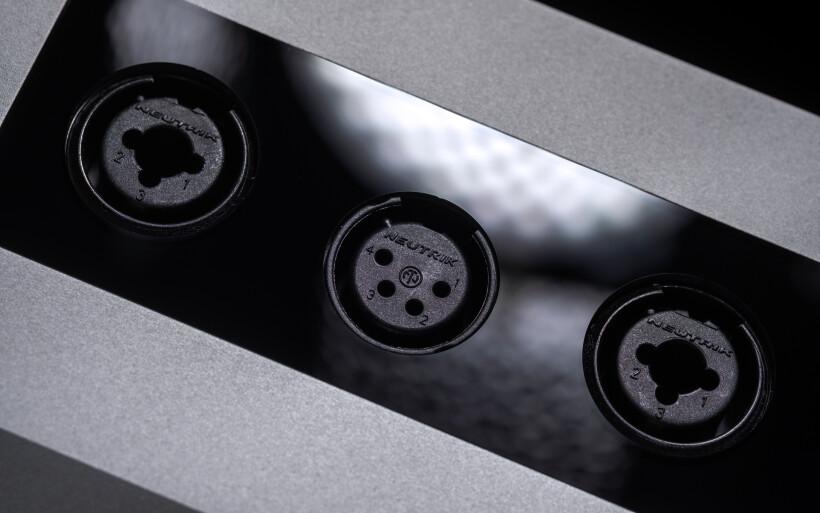 Since Srajan had all the answers in his D10 review, there was no need for me to ask any specific questions. From his writing we learn that this product wasn’t meant to be a simplified D1 but a design with its sonics pushed further and optimized manufacturing cost for lower asking price. This reminds us how much of a money drain the D1’s fabulous fully aluminium CNC-machined chassis was. Although externally similar, the D10’s body features steel plates to effectively trim its cost by 60% with rejects already included, and its circuit is also 20% less expensive to make versus the D1. Needless to say, six years was time long enough for their makers to learn a thing or two about cost-effectiveness.
Since Srajan had all the answers in his D10 review, there was no need for me to ask any specific questions. From his writing we learn that this product wasn’t meant to be a simplified D1 but a design with its sonics pushed further and optimized manufacturing cost for lower asking price. This reminds us how much of a money drain the D1’s fabulous fully aluminium CNC-machined chassis was. Although externally similar, the D10’s body features steel plates to effectively trim its cost by 60% with rejects already included, and its circuit is also 20% less expensive to make versus the D1. Needless to say, six years was time long enough for their makers to learn a thing or two about cost-effectiveness. This report’s product measures (W x H x D) 415 x 100 x 280mm and weighs 10kg, so is a full-sized and enjoyably light product to handle. One quick look at it is all it takes to recognize a minimalist stylish COS design very much alike its D1 sibling on overall aesthetic and sizing. Although my loaner was silver for easier photo work, it can be ordered all black. Its front features the COS logo on the left and a large glossy panel just next to it sports 2 x 3-pin XLR/6.3mm combo outs plus one 4-pin XLR socket in-between. All these headphone outs neighbor with an IR eye and OLED screen which shows volume (from -63.5dB to +6dB), input, sample rate, signal lock and digital buffer on/off. Its resolution was updated significantly enough (from 128×64 in previous COS’ products to 256×64 now) to provide pixel-free readout from afar. A large volume knob located further to the right cycles through inputs if pressed and makes pleasantly clicky sound upon turning.
This report’s product measures (W x H x D) 415 x 100 x 280mm and weighs 10kg, so is a full-sized and enjoyably light product to handle. One quick look at it is all it takes to recognize a minimalist stylish COS design very much alike its D1 sibling on overall aesthetic and sizing. Although my loaner was silver for easier photo work, it can be ordered all black. Its front features the COS logo on the left and a large glossy panel just next to it sports 2 x 3-pin XLR/6.3mm combo outs plus one 4-pin XLR socket in-between. All these headphone outs neighbor with an IR eye and OLED screen which shows volume (from -63.5dB to +6dB), input, sample rate, signal lock and digital buffer on/off. Its resolution was updated significantly enough (from 128×64 in previous COS’ products to 256×64 now) to provide pixel-free readout from afar. A large volume knob located further to the right cycles through inputs if pressed and makes pleasantly clicky sound upon turning.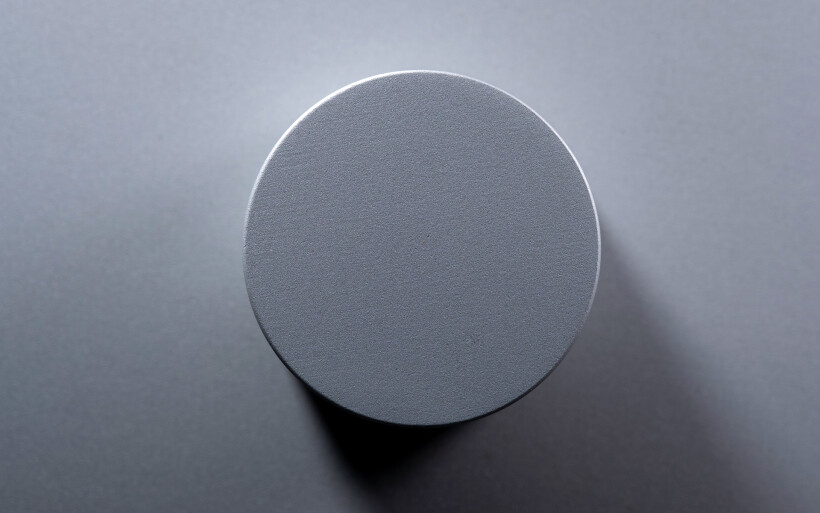 Distinctive lower-ledge bevels have found their way to the D10’s front and both cheeks, which looks rather well if someone asks me. Multiple openings on its hood form the COS logo and provide extra venting. It’s fairly thin and held in place via just one screw so it rattles a bit. If I were to buy a D10 for myself, I’d probably fix two thin cuts of tape just under its bonnet’s both sides and call it a day. The product sits on four quite tall aluminium footers with rubber washers and its underbelly features several venting gaps. The business end houses an IEC inlet with the main on/off switch and self-replaceable fuse. Digital inputs just a bit below include one of each I2S over HDMI, Toslink, BNC, AES/EBU and asynchronous USB2.0. Supported sampling rates are 24-bit/192kHz PCM and DSD256 via USB, whereas remaining inputs go up to DSD64. The knob located in the digital area manually turns on/off COS Engineering’s proprietary digital buffer. The analog I/O part further to the right houses one of each RCA and XLR inputs and the same number of outputs.
Distinctive lower-ledge bevels have found their way to the D10’s front and both cheeks, which looks rather well if someone asks me. Multiple openings on its hood form the COS logo and provide extra venting. It’s fairly thin and held in place via just one screw so it rattles a bit. If I were to buy a D10 for myself, I’d probably fix two thin cuts of tape just under its bonnet’s both sides and call it a day. The product sits on four quite tall aluminium footers with rubber washers and its underbelly features several venting gaps. The business end houses an IEC inlet with the main on/off switch and self-replaceable fuse. Digital inputs just a bit below include one of each I2S over HDMI, Toslink, BNC, AES/EBU and asynchronous USB2.0. Supported sampling rates are 24-bit/192kHz PCM and DSD256 via USB, whereas remaining inputs go up to DSD64. The knob located in the digital area manually turns on/off COS Engineering’s proprietary digital buffer. The analog I/O part further to the right houses one of each RCA and XLR inputs and the same number of outputs.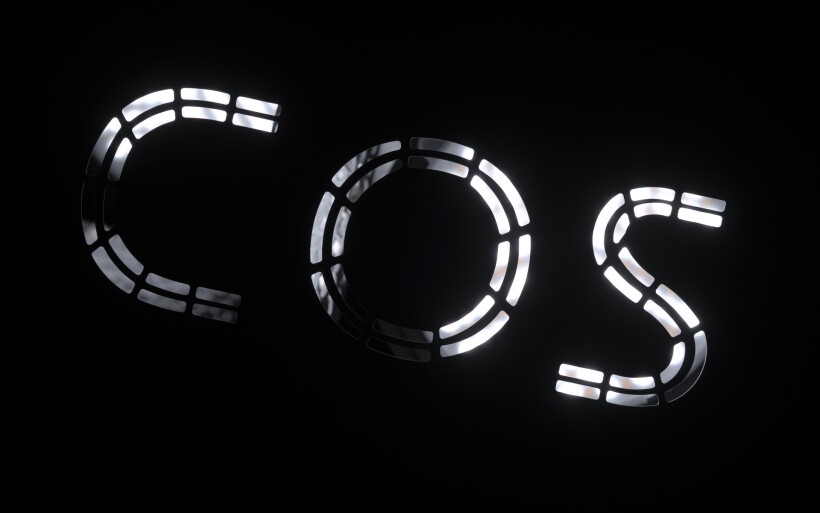 The standard D10’s rear just above the usual digital/analog suspects would feature two removable plates with slots to accommodate compliant slide-in modules purchased separately. My loaner’s compartment for its phono board was empty but the other one had an optional 10/100 Base-T streaming module installed. This handy additive supports UPnP/DLNA and WiFi, talks to Tidal, Deezer, Spotify and Quobuz plus is Roon ready and powerful enough to do full MQA decoding without rendering. The manufacturer lists mconnect Player as a free app of choice for iOS and Android devices, but the feasible software list doesn’t end there. Although I rely exclusively on music inside my fidata’s SSD drive, the D10 had its streamer engaged pretty much constantly and worked flawlessly with this transport. At my place it in fact did well enough that I wouldn’t bother with a similarly functional external product. If purchased separately, the D10’s optional streamer board can be easily installed at home so a big plus. I also can’t complain about the my loaner’s overall behaviour. It was stable, quiet, very responsive and warm on duty but not hot. I’d have a think about including the option to fully dim its display and perhaps a tiny dot in there to differentiate the standby state from complete shutdown.
The standard D10’s rear just above the usual digital/analog suspects would feature two removable plates with slots to accommodate compliant slide-in modules purchased separately. My loaner’s compartment for its phono board was empty but the other one had an optional 10/100 Base-T streaming module installed. This handy additive supports UPnP/DLNA and WiFi, talks to Tidal, Deezer, Spotify and Quobuz plus is Roon ready and powerful enough to do full MQA decoding without rendering. The manufacturer lists mconnect Player as a free app of choice for iOS and Android devices, but the feasible software list doesn’t end there. Although I rely exclusively on music inside my fidata’s SSD drive, the D10 had its streamer engaged pretty much constantly and worked flawlessly with this transport. At my place it in fact did well enough that I wouldn’t bother with a similarly functional external product. If purchased separately, the D10’s optional streamer board can be easily installed at home so a big plus. I also can’t complain about the my loaner’s overall behaviour. It was stable, quiet, very responsive and warm on duty but not hot. I’d have a think about including the option to fully dim its display and perhaps a tiny dot in there to differentiate the standby state from complete shutdown.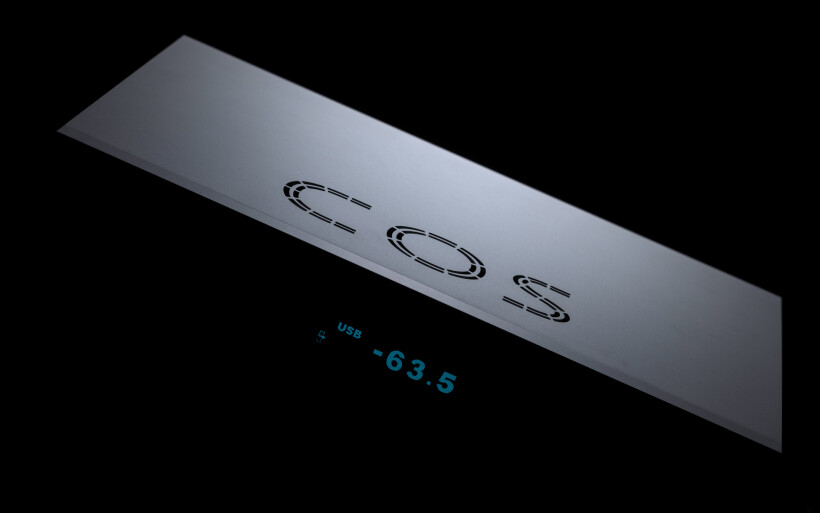 The D10’s hood popped off revealed nicely executed fully balanced interior with all circuits mounted on a large steel slide-in tray connected to the rear panel. This two-layer housing baptized NCT helps in shaving substantial chunk of the manufacturing cost, reinforces the entire structure and keeps EMI/RFI at bay. A massive wall with openings only for cables turns the D10’s inside into two separate compartments and contributes to the effect. Two toroidal transformers subjected to two-stage regulation provide power for analog and digital circuits separately. COS Engineering’s own DSP engine inside TI’s SOC upsamples data from a digital receiver to 176.4/192kHz via a proprietary 32-bit algorithm to then (if it’s not disengaged by a switch) buffer it by one second and reclock via a <1ps oscillator, from where one TI Burr-Brown PCM1792 DAC per channel takes over. Each has its stock SRC module bypassed and Teflon-insulated wiring soldered to its voltage outputs for 6dB higher SNR. A small acrylic roof just under these tiny wires keeps them safe from physical harm. The D10’s relay-switched resistor-ladder volume attenuation is based on components by Dale and NEC, whereas its headfi circuit incorporates multiple LME49600 devices well-known for such applications.
The D10’s hood popped off revealed nicely executed fully balanced interior with all circuits mounted on a large steel slide-in tray connected to the rear panel. This two-layer housing baptized NCT helps in shaving substantial chunk of the manufacturing cost, reinforces the entire structure and keeps EMI/RFI at bay. A massive wall with openings only for cables turns the D10’s inside into two separate compartments and contributes to the effect. Two toroidal transformers subjected to two-stage regulation provide power for analog and digital circuits separately. COS Engineering’s own DSP engine inside TI’s SOC upsamples data from a digital receiver to 176.4/192kHz via a proprietary 32-bit algorithm to then (if it’s not disengaged by a switch) buffer it by one second and reclock via a <1ps oscillator, from where one TI Burr-Brown PCM1792 DAC per channel takes over. Each has its stock SRC module bypassed and Teflon-insulated wiring soldered to its voltage outputs for 6dB higher SNR. A small acrylic roof just under these tiny wires keeps them safe from physical harm. The D10’s relay-switched resistor-ladder volume attenuation is based on components by Dale and NEC, whereas its headfi circuit incorporates multiple LME49600 devices well-known for such applications.
Sound
My fidata HFAS1-S10U handled storage/transport, then a LampizatOr Pacific DAC (KR Audio T-100/Living Voice 300B + KR Audio 5U4G Ltd. Ed.) passed signal to a Trilogy 915R linestage and 995R amps. Today’s D10 was on duty between the fidata and these monos. From there a Boenicke Audio S3 speaker cable went to sound|kaos Vox 3afw monitors. Interconnects used were Boenicke Audio IC3 CG and all key hardware was powered by Boenicke Audio Power Gate distributor box plus its three captive M2 cords. The USB chain included the full iFi audio stack; a micro iUSB3.0, nano iGalvanic3.0, three Mercury3.0 USB cables in-between plus one 9V iPower. One set of external LessLoss Firewall for Loudspeakers modules complimented sound|kaos Vox 3afw, while a Fidelizer EtherStream was in-between my Linksys WRT160N router and fidata server. A GigaWatt PC-3 SE EVO+ power conditioner fronted by its own LC-3 EVO cable fed PSUs for a reclocker, router and network switch.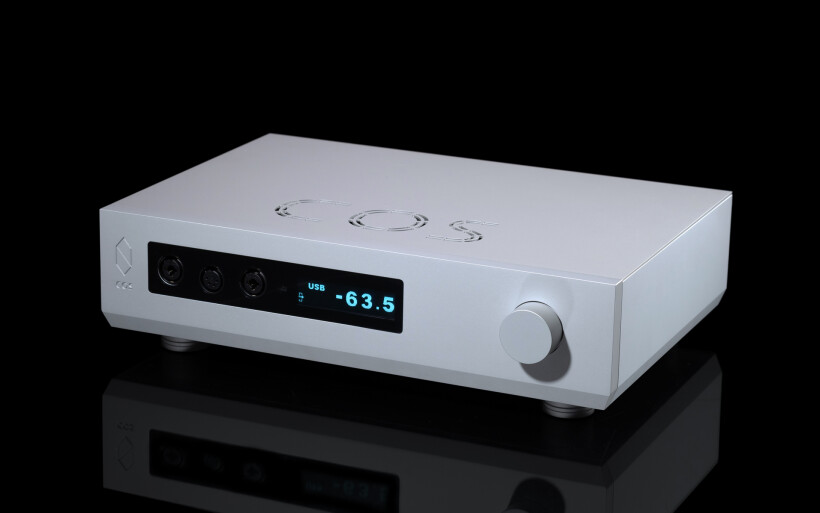 The D10’s versatility was a bit puzzling at first, but a clever battle plan was devised eventually. Although this loaner was fit for duty only as an analog linestage, most individuals will see it as a DAC/pre combo so it only made sense to test it as such. Trilogy’s fully balanced monos turned this route into even more attractive to pursue, but my primary goal was to investigate whether the Taiwanese newcomer could put up any fight against the seven times dearer team 915R/Pacific. Then the D10 had Bakoon’s AMP-13R connected so effectively two different headphone amps were fronted by the same DAC. HifiMan’s inefficiency bastard Susvara was the only load for this job. And lastly, my fidata fed the COS via USB and RJ45 throwaways, just so I could map which one of these two digital routes was better and how.
The D10’s versatility was a bit puzzling at first, but a clever battle plan was devised eventually. Although this loaner was fit for duty only as an analog linestage, most individuals will see it as a DAC/pre combo so it only made sense to test it as such. Trilogy’s fully balanced monos turned this route into even more attractive to pursue, but my primary goal was to investigate whether the Taiwanese newcomer could put up any fight against the seven times dearer team 915R/Pacific. Then the D10 had Bakoon’s AMP-13R connected so effectively two different headphone amps were fronted by the same DAC. HifiMan’s inefficiency bastard Susvara was the only load for this job. And lastly, my fidata fed the COS via USB and RJ45 throwaways, just so I could map which one of these two digital routes was better and how.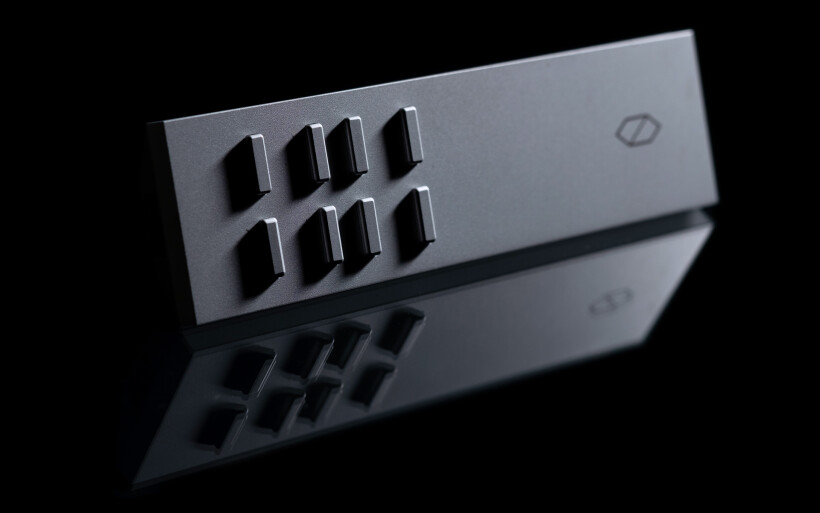 Efficient highly resolving sound|kaos Vox 3afw monitors enjoy quality amps of moderate power output, which is exactly what Trilogy 995R monos provide upon setting them into class A. In this mode they output up to 55wpc and are a brilliant match for Martin Gateley’s petite overachievers. Trilogy’s 915R linestage on the other hand is very powerful so not exactly the quietest type out there and so aren’t microphonic DHTs in my DAC. Having said that, the D10’s distinctive omnipresent aural blackness versus team 915R/Pacific’s audibly noisier more shimmery background behaviour is what struck me right from the get-go. Swiss boxes squeaky clean even with the former’s volume set to max implied thoroughly executed engineering homework and that’s the key thing to take note of.
Efficient highly resolving sound|kaos Vox 3afw monitors enjoy quality amps of moderate power output, which is exactly what Trilogy 995R monos provide upon setting them into class A. In this mode they output up to 55wpc and are a brilliant match for Martin Gateley’s petite overachievers. Trilogy’s 915R linestage on the other hand is very powerful so not exactly the quietest type out there and so aren’t microphonic DHTs in my DAC. Having said that, the D10’s distinctive omnipresent aural blackness versus team 915R/Pacific’s audibly noisier more shimmery background behaviour is what struck me right from the get-go. Swiss boxes squeaky clean even with the former’s volume set to max implied thoroughly executed engineering homework and that’s the key thing to take note of.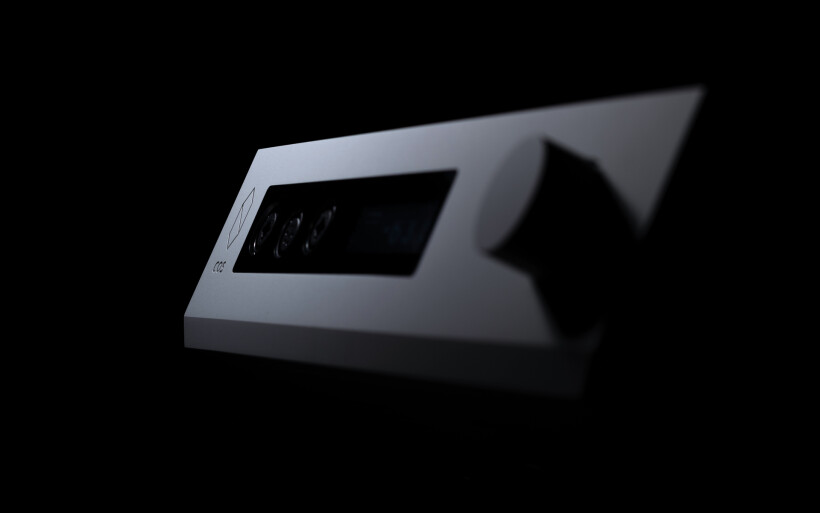 The D10’s particularly fetching quietness had to be the result of its clean circuit, but also was the well-known highly desirable measure that allows music to flow better. It reduces background grain and turns sharp choppy outlines into more round and firm shapes. It injects extra tone to cut through their internal paleness and have them more substantial and alive. It provides longer decay, firms up bass, boosts overall clarity and liberates sound from nervousness, harshness or any other digital culprit. Today’s COS had this foundational base fully covered. That’s why instead of rushing with the usual comparative routine I admired its tonally rich voice one track at a time, which doesn’t happen very often.
The D10’s particularly fetching quietness had to be the result of its clean circuit, but also was the well-known highly desirable measure that allows music to flow better. It reduces background grain and turns sharp choppy outlines into more round and firm shapes. It injects extra tone to cut through their internal paleness and have them more substantial and alive. It provides longer decay, firms up bass, boosts overall clarity and liberates sound from nervousness, harshness or any other digital culprit. Today’s COS had this foundational base fully covered. That’s why instead of rushing with the usual comparative routine I admired its tonally rich voice one track at a time, which doesn’t happen very often. It took just one back and forth to notice the D10’s general sonic MO not comparable to the 915R married to the Pacific, however most individuals would agree that the fundamental quite striking disparity between them had very little to do with quality tiers per se. These were in fact two radically different if not quite opposite projections of music as a whole. Past brief introductory courtesies the COS emerged as slower, bassier, earthlier, beefier, dreamier and was more distant, voluptuous and relaxed, whereas its two opponents conjoined took a major detour towards accuracy, insight, agility, pronunciation, nimbleness, shine, sheer power, openness, illumination, oxygenation, directness and alike. These two self-explanatory approaches were easy to grasp. It’s tempting to conclude that this was yet another fight of ’em apples against their mortal rivals oranges, but there was more.
It took just one back and forth to notice the D10’s general sonic MO not comparable to the 915R married to the Pacific, however most individuals would agree that the fundamental quite striking disparity between them had very little to do with quality tiers per se. These were in fact two radically different if not quite opposite projections of music as a whole. Past brief introductory courtesies the COS emerged as slower, bassier, earthlier, beefier, dreamier and was more distant, voluptuous and relaxed, whereas its two opponents conjoined took a major detour towards accuracy, insight, agility, pronunciation, nimbleness, shine, sheer power, openness, illumination, oxygenation, directness and alike. These two self-explanatory approaches were easy to grasp. It’s tempting to conclude that this was yet another fight of ’em apples against their mortal rivals oranges, but there was more.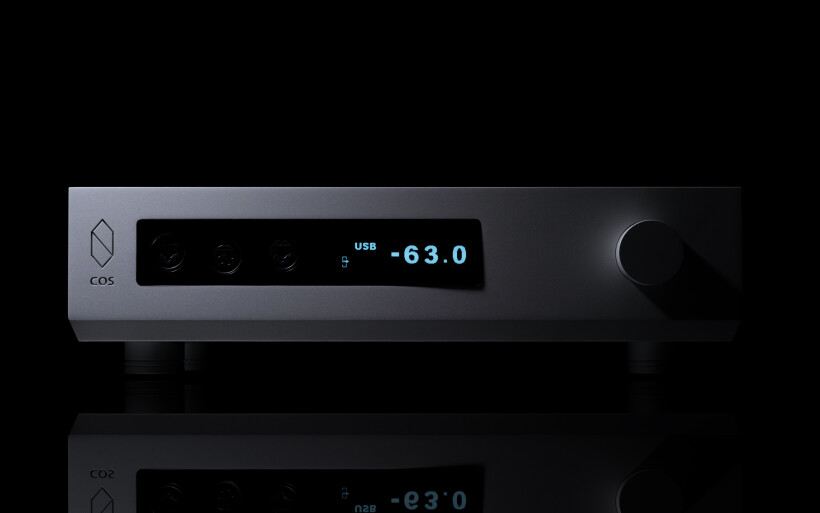 If the paragraph above reads as if the D10 was chubby, sluggish and bloated versus its two conjoined lit-up zippy lean adversaries, it wasn’t. The reality is that all contestants operated at a sonic level high enough to not feel overdone or crippled in any way in particular. Instead they felt coherent and balanced in spite of their respective very distant voicing biases. In this context neither the inherently rapid fit 915R/Pacific combo sounded too skinny and piercing, nor was the thicker more relaxed D10 abnormally syrupy and unclear. That particular sensation of completeness is one of the most important aspects that to my ears define a great product. That’s what keeps me immersed in music instead of thinking about small things to change/improve. Suffice to say, the latest COS had me focused on just the right stuff.
If the paragraph above reads as if the D10 was chubby, sluggish and bloated versus its two conjoined lit-up zippy lean adversaries, it wasn’t. The reality is that all contestants operated at a sonic level high enough to not feel overdone or crippled in any way in particular. Instead they felt coherent and balanced in spite of their respective very distant voicing biases. In this context neither the inherently rapid fit 915R/Pacific combo sounded too skinny and piercing, nor was the thicker more relaxed D10 abnormally syrupy and unclear. That particular sensation of completeness is one of the most important aspects that to my ears define a great product. That’s what keeps me immersed in music instead of thinking about small things to change/improve. Suffice to say, the latest COS had me focused on just the right stuff.  One thing about the D10 that very quickly caught my attention was how stately, meticulous, bold and calm it was. Virtual outlines it drew via fairly thick brush strokes rather than pointy pencil swings and with pastel not wartecolor internal filler. This plus generous on-stage presence reminded me about Trilogy’s similarly profiled 925 integrated amp. It also favoured cruising speeds in a large comfy SUV over burning rubber inside a quick stiff two-seater. On substance, saturation, visual might, elegance and adulthood the 925 scored impressively high and served at my place long enough for its finely seasoned fully mature personality to etch very deep in my mind and today’s COS fits that unmistakably charming profile as well. It also sounded in a relaxed somewhat dreamy manner that was as easygoing to listen to as it was complex, sensual, expressive and posh.
One thing about the D10 that very quickly caught my attention was how stately, meticulous, bold and calm it was. Virtual outlines it drew via fairly thick brush strokes rather than pointy pencil swings and with pastel not wartecolor internal filler. This plus generous on-stage presence reminded me about Trilogy’s similarly profiled 925 integrated amp. It also favoured cruising speeds in a large comfy SUV over burning rubber inside a quick stiff two-seater. On substance, saturation, visual might, elegance and adulthood the 925 scored impressively high and served at my place long enough for its finely seasoned fully mature personality to etch very deep in my mind and today’s COS fits that unmistakably charming profile as well. It also sounded in a relaxed somewhat dreamy manner that was as easygoing to listen to as it was complex, sensual, expressive and posh. 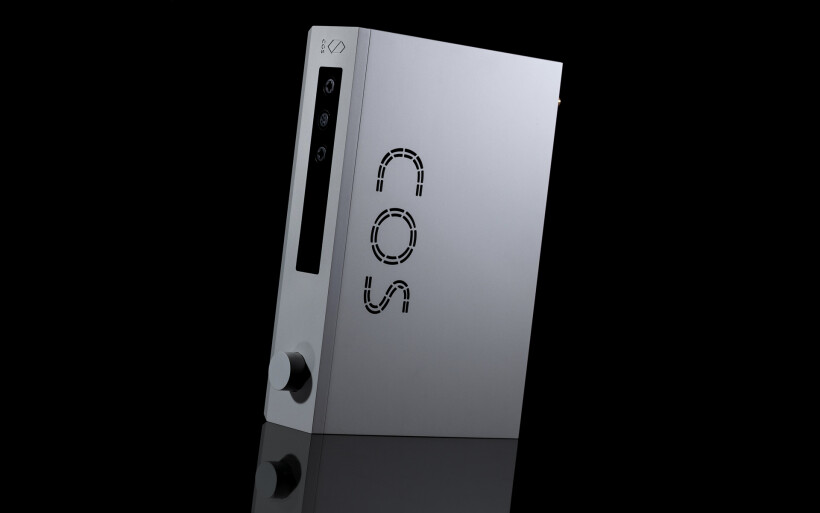 My linestage and DAC as a team painted larger more alive and illuminated landscapes and provided even more insight versus the newcomer D10 also lees generous the ‘here and now’ music portrayal, dynamic might, propulsion and snappy overall gestalt. This however doesn’t change the fact that on many recordings one wouldn’t be able to tell which contestant was costlier. The COS’ darker less tense attitude I’ve found subjectively more fitting for atmospheric tribal music by Wardruna, Heilung or Danheim and the same story was with i.e. calm haunting double bass jobs. Although less contoured, stiff and ripped, the D10 witch such repertoire was a touch more real and believable instead. Its very strong, stirring, pleasantly grounded and engaging personality many times worked for me so well that I felt no need to get back to my daily drivers. This alone speaks volumes.
My linestage and DAC as a team painted larger more alive and illuminated landscapes and provided even more insight versus the newcomer D10 also lees generous the ‘here and now’ music portrayal, dynamic might, propulsion and snappy overall gestalt. This however doesn’t change the fact that on many recordings one wouldn’t be able to tell which contestant was costlier. The COS’ darker less tense attitude I’ve found subjectively more fitting for atmospheric tribal music by Wardruna, Heilung or Danheim and the same story was with i.e. calm haunting double bass jobs. Although less contoured, stiff and ripped, the D10 witch such repertoire was a touch more real and believable instead. Its very strong, stirring, pleasantly grounded and engaging personality many times worked for me so well that I felt no need to get back to my daily drivers. This alone speaks volumes. At this point it was time to involve notorious Susvara headphones and investigate where the D10 was versus the most suitable amp I was able to find for them. With this load the result was relaxed, a bit distant, texturally loaded, enveloping and thoroughly atmospheric. In short, the same aural vibe as heard with sound|kaos Vox 3afw was now present with the Susvara, but a bit lazier. With these cans the COS had its volume set at around -10dB and could go as high as up to -2dB on several quiet tracks, but there was still some headroom left and SPL wasn’t an issue. The Bakoon on the other hand turned the same notorious cans into a more quicksilvery, rapid, detailed, shredded and direct performer. It opened them up and all in all was a better match, but that was hardly a shocker considering it’s the very best amp for these cans I’m aware of.
At this point it was time to involve notorious Susvara headphones and investigate where the D10 was versus the most suitable amp I was able to find for them. With this load the result was relaxed, a bit distant, texturally loaded, enveloping and thoroughly atmospheric. In short, the same aural vibe as heard with sound|kaos Vox 3afw was now present with the Susvara, but a bit lazier. With these cans the COS had its volume set at around -10dB and could go as high as up to -2dB on several quiet tracks, but there was still some headroom left and SPL wasn’t an issue. The Bakoon on the other hand turned the same notorious cans into a more quicksilvery, rapid, detailed, shredded and direct performer. It opened them up and all in all was a better match, but that was hardly a shocker considering it’s the very best amp for these cans I’m aware of.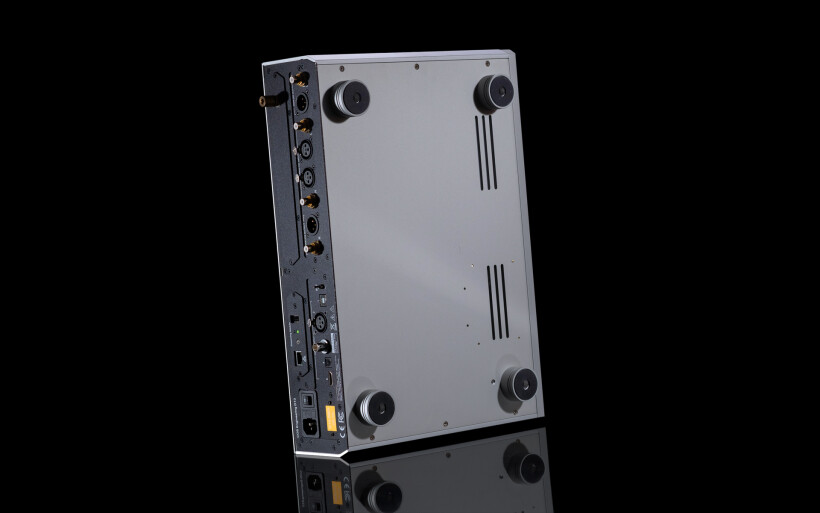 Although the AMP-13R had the advantage over the COS, several things had to be taken into account. The Susvara’s inherently low efficiency translates into fondness towards butch power that’s off the menu for most regular headfi decks. Since the D10 is one, the Bakoon’s supremacy with these specific cans was a dead cert long before the former’s arrival. But more importantly, I had no headphones other than this unusually tough to drive planar specimen, so my knowledge about the D10’s headfi out is still very limited. What I got with it and the Susvara was very promising, but given my lack of more universal tools for this job I’ll stop here. Luckily Srajan’s workbench was equipped far better, so let me once more encourage you to take a look at his story. To make it short, with many great cans he’d found the D10’s headfi out very capable.
Although the AMP-13R had the advantage over the COS, several things had to be taken into account. The Susvara’s inherently low efficiency translates into fondness towards butch power that’s off the menu for most regular headfi decks. Since the D10 is one, the Bakoon’s supremacy with these specific cans was a dead cert long before the former’s arrival. But more importantly, I had no headphones other than this unusually tough to drive planar specimen, so my knowledge about the D10’s headfi out is still very limited. What I got with it and the Susvara was very promising, but given my lack of more universal tools for this job I’ll stop here. Luckily Srajan’s workbench was equipped far better, so let me once more encourage you to take a look at his story. To make it short, with many great cans he’d found the D10’s headfi out very capable.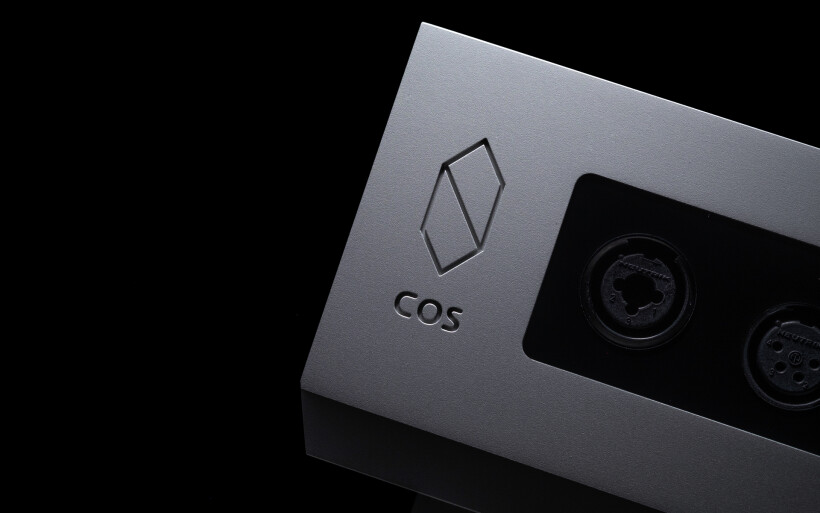 The optional streamer module was the last stop. The fidata connected to the D10’s RJ45 and USB sockets at the same time via regular 1.0m throwaway cables. I could conveniently compare them by selecting my preferred signal carrier within fidata’s own iOS app and engaging its corresponding input on the Taiwanese loaner. The entire swapping process was fairly straightforward and it didn’t take long to know what was up. As expected the COS fed with data over RJ45 was a fair bit happier; bloomier, with cleaner background, improved clarity, more on-stage air, longer decay, finer textures and a touch more heft. It sounded noticeably better, simple as that. But was my fidata’s RJ45 out prioritized over USB? Or were the D10’s inputs alike biased as well? Maybe both contributed? I couldn’t tell but this didn’t matter, on the contrary to the inclusion of iFi’s entire USB stack to offset the quality difference between both digital route. It took two boxes, three cables and one charger extra to match today’s streamer board… that sells for half this entire lot’s ask and requires no space at all. The prosecution rests its case.
The optional streamer module was the last stop. The fidata connected to the D10’s RJ45 and USB sockets at the same time via regular 1.0m throwaway cables. I could conveniently compare them by selecting my preferred signal carrier within fidata’s own iOS app and engaging its corresponding input on the Taiwanese loaner. The entire swapping process was fairly straightforward and it didn’t take long to know what was up. As expected the COS fed with data over RJ45 was a fair bit happier; bloomier, with cleaner background, improved clarity, more on-stage air, longer decay, finer textures and a touch more heft. It sounded noticeably better, simple as that. But was my fidata’s RJ45 out prioritized over USB? Or were the D10’s inputs alike biased as well? Maybe both contributed? I couldn’t tell but this didn’t matter, on the contrary to the inclusion of iFi’s entire USB stack to offset the quality difference between both digital route. It took two boxes, three cables and one charger extra to match today’s streamer board… that sells for half this entire lot’s ask and requires no space at all. The prosecution rests its case.
Summary
All previously reviewed COS Engineering products had me fully convinced about their makers’ solid designer know-how and no lesser attention to sound quality. Their latest effort not only reinforced this opinion, but it also emerged in my roster as the most impressive and accomplished COS development to date.
The COS Engineering D10 felt as luxurious, aesthetically pleasing and nicely put together as its siblings yet surpassed them all on utility, versatility and smarts, which is hardly surprising considering that’s the only COS platform fit for up to five different jobs. However, the D10’s optional slide-in boards easy to install at home and available whenever one feels like pursuing them are what truly makes this clever modular twist special. The ability to accommodate extra features like so also shows team COS’ highly admirable pro-consumer thoughtfulness and future-proofing skills.
Although I barely licked the latest COS’ headfi out and its phono remains a mystery as well, as a DAC/pre/streamer package it delivered on all sonic fronts well enough to often have two its far pricier competitors on standby, which isn’t easy to pull off. The D10’s fully adult captivating performance combined with broad functionality, fab looks and versatility resulted in an impressive multitasker priced generously for what it is. ‘Til next time!
Associated Equipment:
- Amplifier: Bakoon AMP-13R, Trilogy 995R
- DAC: LampizatOr Pacific (KR Audio T-100 / Living Voice 300B + KR Audio 5U4G Ltd. Ed.)
- Speakers: sound|kaos Vox 3afw
- Transport: fidata HFAS1-S10U
- Preamplifier: Trilogy 915R
- Headphones: HifiMan Susvara
- Speaker cables: Boenicke Audio S3, LessLoss C-MARC
- Speaker signal conditioning: LessLoss Firewall for Loudspeakers
- Interconnects: Boenicke Audio IC3 CG
- Power components: Gigawatt PC-3 SE EVO+/LC-3 EVO, LessLoss C-MARC, Boenicke Audio Power Gate
- USB components: iFi audio iGalvanic3.0, iFi audio micro iUSB3.0, 3x iFi audio Mercury3.0, iPower 9V
- Rack: Franc Audio Accesories Wood Block Rack
- Network: Fidelizer EtherStream, Linksys WRT160N
- Music: NativeDSD
Retail prices of reviewed components in EU (excl. tax):
- COS Engineering D10 (as reviewed): €5’400
- COS Engineering D10 3-in1 (DAC/pre/headfi amp): €4’500
- Optional streaming module: €900
- Optional phono module: €700
Manufacturer: COS Engineering


